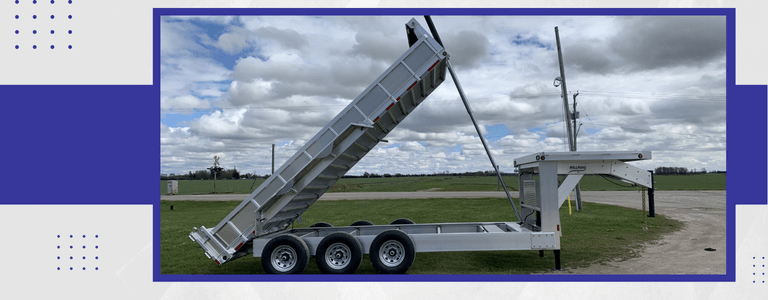
How to Keep Trailer Tires in Good Condition
5 Proven Ways to Keep Trailer Tires in Good Condition
Custom trailers are only as reliable as their tires. An issue with one tire probably necessitates the replacement of multiple tires, to ensure even wear and tear over time. You can save significant time and money by regularly maintaining your trailer tires. Here’s how to do it.
1. Distribute Weight Properly
The most important thing for proactive tire maintenance is checking every load to ensure even distribution of cargo weight across the trailer. If one end is consistently bearing extra weight, the tires on that end will wear differently, and likely deflate faster.
Pay special attention to the gross vehicle weight ratio (GVWR). Hauling too much weight will overburden the tires, increasing the likelihood of blowouts and early replacement. For a single-axle trailer, load the heaviest items toward the tongue and hitch area of the trailer. For a double-axle trailer, place the heaviest items toward the center of the bed.
2. Ensure Protection Against Weather
Heat, ice, rain, and dry weather all affect the integrity of your utility trailer tires. Large fluctuations in temperature cause the rubber to expand and contract, resulting in unpredictable tire pressure and uneven seals. Be especially mindful of this if you are consistently travelling through varying elevations and climates. Dramatic temperature changes can cause the seal between the tire wall and the wheel well to show gaps. This causes air pressure leaks and allows dust and debris to infiltrate the tire.
Excessive heat can also cause cracking or stress fractures in the rubber. Make every effort to store your trailer indoors when it is not on the road. If you’re not able to keep it in a garage, use a waterproof tarp to keep your tires out of the direct sunlight and rain.
3. Inspect Axles
Check to see if your axles are bent or stressed. Driving over rough terrain or hitting potholes can cause damage to the axle. Custom utility trailers need extra attention in this regard. You know the specifications of your trailer. It is even more important with custom trailers to spot-check your axles since not all mechanics and technicians will be able to repair a custom build. Become the expert on your own trailer.
4. Measure Tread Regularly
Bald tires are a problem for any vehicle. For a utility trailer, worn tread means poor traction and an increased likelihood of fishtailing or losing control of the vehicle in subpar weather conditions. Refer to your owner’s manual to confirm how deep the tire’s tread should be.
A conventional way to measure tread is to insert a quarter into the tread, with George Washington’s head facing downward. If the top of Washington’s head is still visible, your tread has worn too thin. This is usually about 4/32″ or less.
Another method is to use a narrow tape measure and double-check the specific millimetre depth recommended by the manufacturer. Industry-standard tread depth gauges are also a reliable measurement tool.
5. Check Inflation Levels
The side of the tire wall will indicate what level of PSI is recommended for that specific tire, Checking inflation levels of each tire before and after a trip increases fuel efficiency, reduces too much surface contact between the road and the tire, helps your tires last longer, and improves safety for you, your cargo, and other passengers on the road.
Custom Trailers from Millroad Manufacturing
While we offer an appealing array of prefab trailers, our specialty is creating an aluminum trailer that is perfect for your specific needs. Size, capacity, brakes, and electronics can all be customized. Reach out to us today via phone or email to start designing exactly what you need.